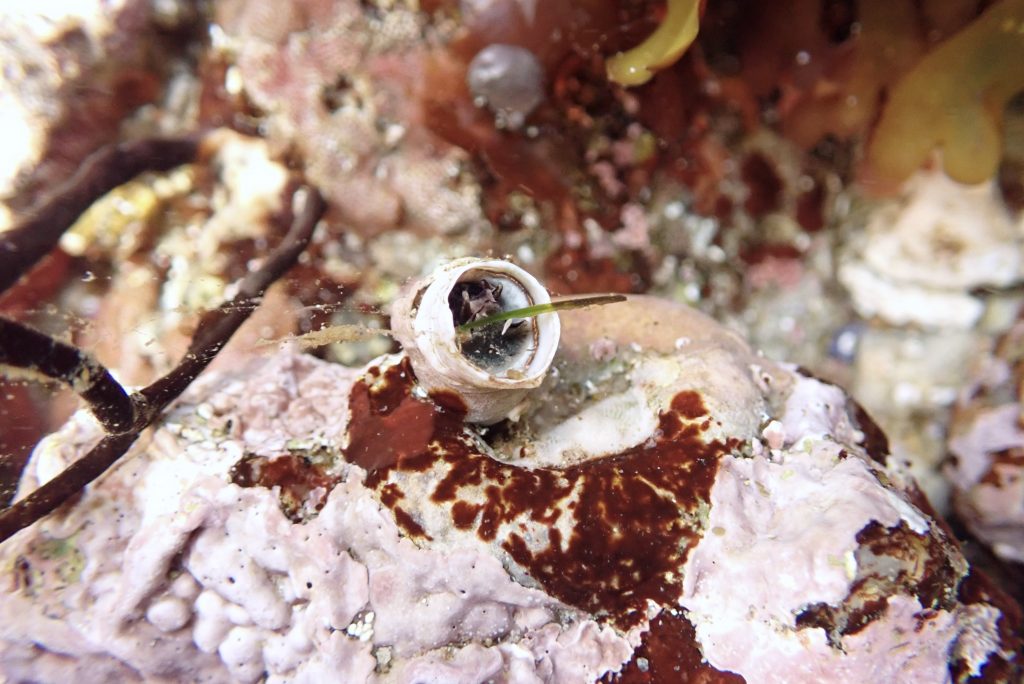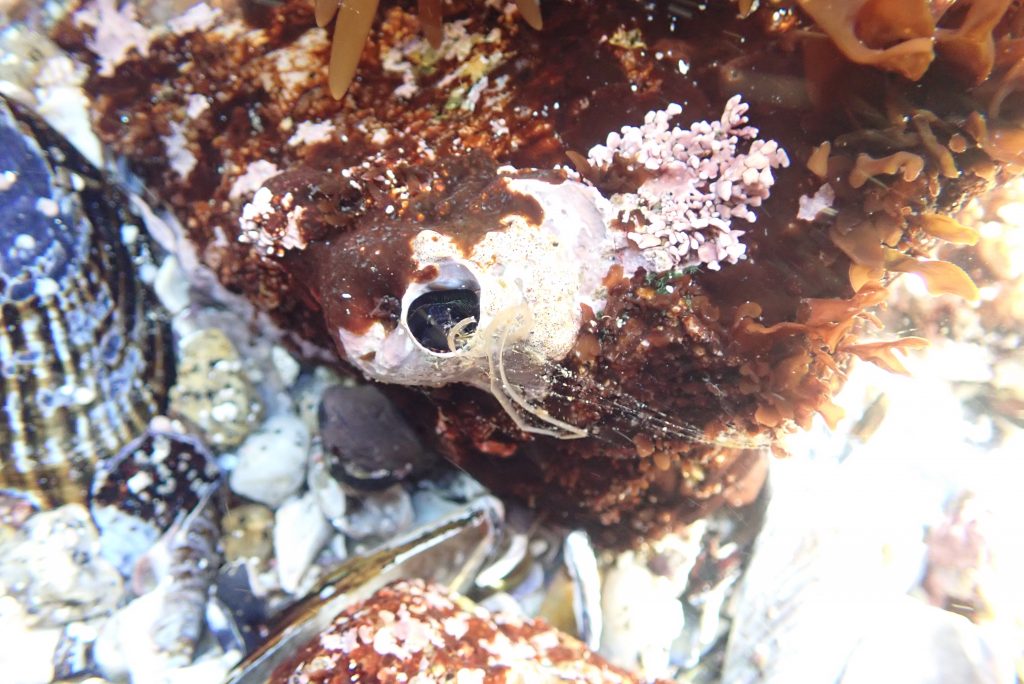One of the many delightful animals in the rocky intertidal is the vermetid snail, Thylacodes squamigerus. Unlike their more typical gastropod relations, the vermetids don’t live in a shell, per se. Instead, they live in a calcareous tube, which forms a loose coil draped over the surface of a rock. The tubes can be up to about 12 mm in diameter, and, if straightened out, about 15 cm long. In some locations, Thylacodes can be very abundant. In a recent visit to Point Pinos in Pacific Grove, I saw many of them in the low intertidal. I occasionally see them on the northern end of Monterey Bay and points farther north, but at nowhere near the abundance I see in Pacific Grove. At a larger scale, iNaturalist shows observations of T. squamigerus from northern British Columbia down to southern Mexico.

2022-06-03
© Allison J. Gong
Most snails are either grazers (e.g., abalones, limpets, turban snails) or predators (e.g., whelks, conchs, cone snails). Thylacodes is a bit of an outlier with regards to feeding as well as housing, for it is a suspension feeder. Being entirely sessile, it cannot go out and forage. And unlike its doppelganger, the tubeworms Serpula columbiana and S. vermicularis, Thylacodes does not create a water current to catch food on ciliated tentacles. Instead, it spins threads of sticky mucus that thrash around in the current and capture suspended detritus. When the tide is out the snail hunkers down in its tube, same as any worm. It cannot feed unless it is immersed. Where the worms live in the low intertidal on exposed rocky coasts, the water is moving constantly, and it requires relatively little energy for Thylacodes to feed the way it does. As a bonus, even the calories expended in producing the mucus are recouped, as the snail ingests the mucus strands as well as the food particles they capture.
When the tide came back, I got to watch Thylacodes in action. At Point Pinos there are some areas that form lovely tidepools, deep enough for animals to react to the return of the water and clear enough to make photography and videography possible. So standing knee-deep in a pool I stuck the camera underwater and hoped for the best. And I got lucky—you can see the mucus threads!
See here:

2022-06-03
© Allison J. Gong
and here:

2022-06-03
© Allison J. Gong
And not only that, but I captured some video footage. I use a point-and-shoot for these underwater shots, and usually don’t know what or whether I’ve shot anything good until I download images and video at home. Color me happy to have seen these clips!
Despite the unusual aspects of its biology, Thylacodes is indeed a snail. It has a conventional snail’s radula, and uses it the way, say, an owl limpet (Lottia gigantea) uses hers to scrape algae off rocks at Natural Bridges. Only instead of scraping the radula against rocks, Thylacodes uses its radula to reel in the detritus-laden mucus threads. That’s what’s going on in the second video clip above.
So there you have it, another of my favorite animals. Thylacodes is one of those animals that doesn’t look like much when you see it just sitting there. But we get to see it only during the tiny fraction of its life that it spends emersed. As with most inhabitants of the rocky intertidal, much of Thylacodes‘ life occurs out of sight for human eyes. This makes the occasional sighting of Thylacodes under water especially enlightening. And delightful!

